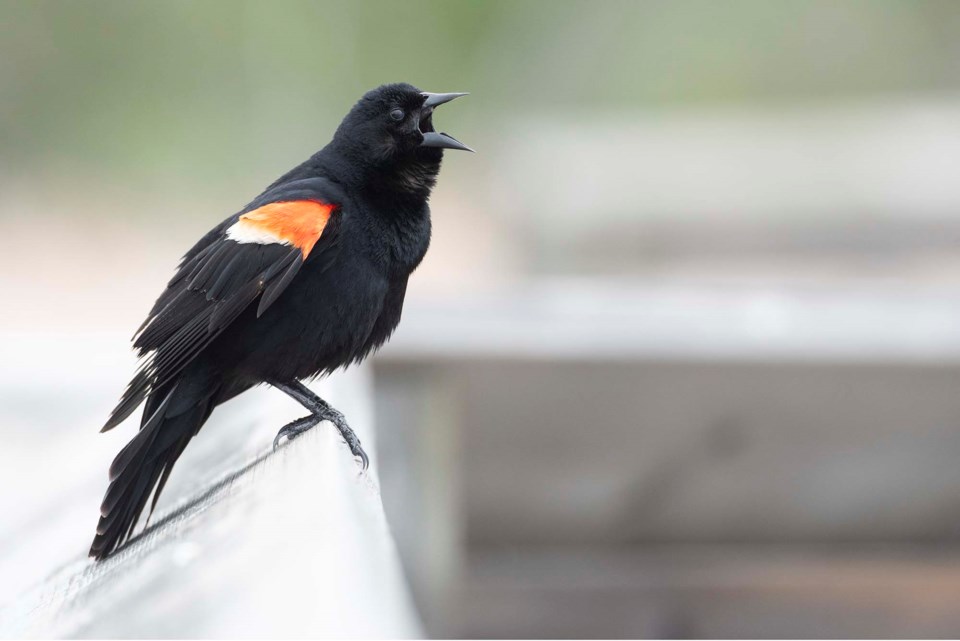You never know what you’ll find at Lois Hole Centennial Provincial Park.
Maybe you’ll catch a moose munching red osier dogwood, or a screaming black tern dive-bombing your head (duck!). You might spot a ball of amorous, quacking wood frogs roiling in the water, a red-winged blackbird showing off its shoulders as it sings, or any number of the thousands of birds, bugs, and beasts that call the park home.
It’s easy to spend hours at the park just taking it all in, which is probably why Lois Hole Park was voted the best day trip destination in this year’s Readers’ Choice Awards.
The park
A globally significant Important Bird Area, Lois Hole Park is roughly 2,000 hectares in size (nearly twice the size of Morinville) and consists of Big Lake, the John E. Poole Wetland, and a vast stretches of inaccessible forest and swamp. In it are geocaches, the John E. Poole boardwalk, the Big Lake Environment Support Society viewing platform, a few kilometres of trail, and roughly 235 species of birds, including the trumpeter swan, peregrine falcon, and Sprague’s pipit.
Nick “Nature Nick” Carter grew up around Big Lake and visits the region often for nature photography.
“The lake and the surrounding area are so rich in biodiversity,” he said, including muskrats, moose, and frogs, and its paths and boardwalks make it easily accessible.
Scarce facilities and its importance for breeding birds limit the legal activities in Lois Hole Park to birding, hiking, wildlife viewing, and geocaching, Alberta Parks reports. That means no guns, drugs, horses, fires, firearms, drones, camping, fishing, harvesting, or motorized vehicles in the park. You can bring a pet so long as it’s always on leash, and you can paddle a boat in Big Lake outside of the early May-early July nesting season and outside of the Special Protection Zone (which covers about two-thirds of the park).
What to do
The easiest part of the park to reach is the area around the Poole wetland and the BLESS platform, as it has actual trails. BLESS spokesperson Miles Constable says you can find plenty of amphibians and waterfowl in this region, and learn about them from the BLESS Summer Nature Centre interpreter during the summer months.
You’ll have to bushwhack, kayak, and possibly trespass to reach the rest of the park, which is mostly undeveloped. Big Lake explorers such as Al Doberstein, Ludo Bogaert, and Blodgett have reported finding ancient spruce trees, abandoned trapper’s cabins, and huge ferns in the park’s depths. Probably the most accessible region is the old Ducks Unlimited trail on the north side of Big Lake, which Carter said is a great place to spot snow geese in the spring and fall.
What you’ll see in the park depends on when you go. Morning guests might encounter moose, porcupines, and flying waterfowl, all busy searching for breakfast. Most animals will bed down in the afternoon heat, but not the barn swallows, which will be swooping around the Poole boardwalk gobbling bugs. You probably won’t be able to see much at night, but Constable said you might hear a beaver munching on a tree, and could encounter bats, deer, and salamanders.
Anyone who wants to spend a day at Lois Hole Park should bring water, bug spray, a hat and jacket, and probably binoculars for bird-watching, Carter and Constable said. Don’t feed the birds, and give moose a wide berth.
“Leave only footprints. Take only photos,” Constable said.
Constable said a day at Big Lake is a great way to get some exercise, adding research suggests time in the outdoors improves your mental health.
“It’s generally a lot of fun.”
Visit www.albertaparks.ca/parks/central/lois-hole-centennial-pp for details on the park.




